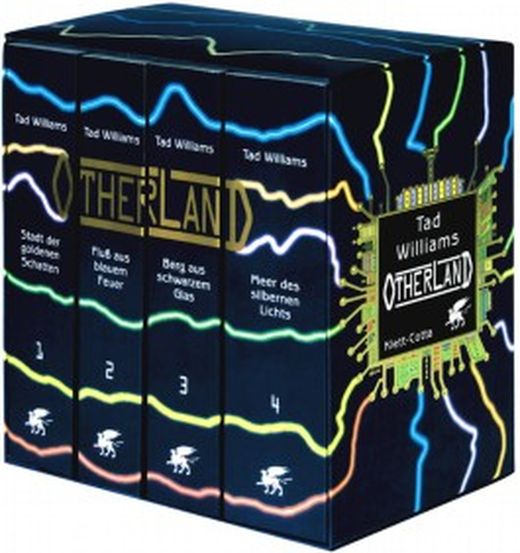

Their most bizarre and horrifying discovery is a very powerful hypnotic entity, which Renie nearly dies trying to escape from. Inside the club, they discover a number of very unsavoury entertainments, and are very nearly trapped by the managers. When he somehow ends up in a coma after visiting a forbidden club, she and !Xabbu decide to investigate.

Stephen spends much of his time online and frequently joins his friends in escapades to forbidden areas of the net. Her family is made up by her alcoholic father Long Joseph and her ten-year-old brother Stephen.
TAD WILLIAMS OTHERLAND CLIFF NOTES HOW TO
In Durban, a VR programming instructor named Irene "Renie" Sulaweyo is teaching a Kalahari San named !Xabbu how to create such environments, while providing for her family.

The internet has been replaced by "the Net," a vast network of online VR environments. The most significant technological change is the wide availability of virtual reality interfaces among all parts of society. The story moves to the late 21st century. He discovers himself in a place similar to the chess-land in Lewis Carroll's Neanderthals, and a voice comes from the harp, telling him that friends will search for him on the river. Paul flees in terror and falls through a hole in space. There, he finds the bird-woman but Finch and Mullet have pursued him, and they have been transformed into monstrous shapes: Mullet is grossly fat and Finch has no eyes. Eventually, Paul runs off into no-man's land. Two of his comrades, Finch and Mullet, begin to express doubts about his sanity. He wakes from the experience to find himself back in the trenches, but realizes the experience was not a dream when he discovers the feather. In what he at first believes to be a dream or hallucination, he meets a woman with wings, who gives him a feather. Keywords: moral theory, ethics, „epistemological ethics” conceptual innovation, value, man, person, Roberto Poli.The first character introduced is a man called Paul Jonas, apparently an infantryman on the Western Front of the First World War.

In the light of this new debate, Roberto Poli's perspective on the need to return to “ontological neglect”, “methodological primitivism” and “ignorance of our own roots” continues our present research and interrogations and reveals new coordinates of knowledge and understanding. The entire content of this concept is a theoretical link between epistemic and ethical justification, in terms of mind–body ratio, brought into a unified approach of humanity and knowledge. This idea is in relation with the concept of “epistemological ethics”, that we propose to the scientific community for validation. However, this method requires ethical conceptual clarification on which to build the architecture of knowledge. The meaning of ethical values has been extended and gained various linguistic forms and understandings, basically because the value dimension is not founded on an ethical methodology. In relation to ethics, current theories and guidelines are often mentioned, which, in fact, shows the lack of an epistemological founded ethical apparatus, in the absence of which, moral judgment loses its prime reason, namely valuing the ethical man – as a person. Gray succeeds in utilising the characteristically protean quality of the postmodern age for aesthetic purposes of his own making, challenging by the means of the mutually reinforcing form and content of his work our assumptions about the world as we know it. Under the alias of Sidney Workman, Gray also fulfils the task of the literary critic in annotating the metafictional chapter of Lanark with discursive footnotes and embedding in it an index of earlier authors and texts that have been supposedly plagiarised in the novel under scrutiny. Gray figures in Lanark not only as the author of the text and the creator of the accompanying original illustrations, he also makes a cameo appearance as the morose and mean writer of the work-in-progress, who engages in an intellectual discussion with his protagonist concerning the plot of the very novel. Widely regarded as the leading figure of the 1980s Scottish literary renaissance and the founding father of Scottish postmodern fiction, Gray emerged as a major creative artist with the publication of his influential novel Lanark: A Life in Four Books (1981), which epitomises his experimental approach to literary production and consumption. This paper examines the sheer variety of creative roles that the contemporary Scottish iconoclastic writer Alasdair Gray assumes in his works of fiction, discussing the external manifestations of his multifaceted talents in action as well as considering the conveyed effect.


 0 kommentar(er)
0 kommentar(er)
